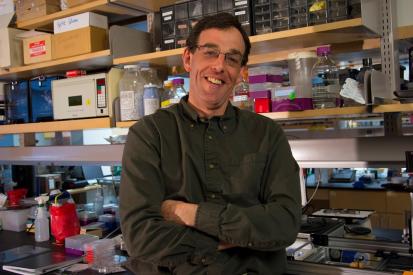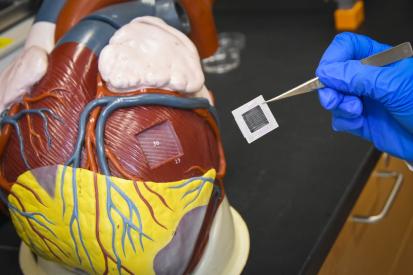The overall objective of my research is to create bioengineered scaffolds to enhance the regeneration of damaged tissues and organs. Specifically, my laboratory uses biomimetic design strategies and novel fabrication processes to develop three-dimensional constructs that emulate native tissue architecture and cellular microenvironments. We use these scaffolds to characterize the roles of extracellular matrix (ECM) cues and topographic features in modulating cellular functions, including adhesion, migration, proliferation, differentiation, and tissue remodeling. For example, we are investigating the design of microfabricated basement membrane structures to direct keratinocyte function and enhance the performance of bioengineered skin substitutes. We are also designing novel biopolymer microthreads that are being used to deliver stem cells and to facilitate myocardial or skeletal muscle regeneration. These scaffolds have been used, as well, to develop in vitro model systems to predict cellular and tissue responses to implantable biomaterials for the repair of soft tissues including tendon and ligament.
In the classroom, I enjoy teaching students about the fundamentals of biomaterials science and cell-biomaterial interactions to design implantable biomaterials that promote functional tissue restoration. I particularly enjoying working with teams of students on capstone design projects to develop biomaterials scaffolds and benchtop assays to characterize cell-biomaterial interactions that can be used to solve clinical problems related to wound healing and tissue regeneration. At the graduate level, I enjoy mentoring master’s and doctoral students; helping them develop into independent scientists and engineers who will contribute to solutions of various healthcare problems.
Scholarly Work
Developing quantitative MRI parameters to characterize host response and tissue ingrowth into collagen scaffolds, Shazeeb, M. S. *- Howes, S., *-Kandasamy, S., Peiris, T.B., Sotak, C.H., Pins, G.D., NMR in Biomedicine, 2019 Mar;32(3):e4059, PMID: 30657204
Design of a Fibrin Microthread-Based Composite Layer for Use in a Cardiac Patch., *-Chrobak, MO, *- Hansen, K.J., *- Gershlak, J.R., Vratsanos, M, Kanellias, M., Gaudette, G.R., Pins, GD., (2017) ACS Biomaterials Science and Engineering., (2017) 3 (7), 1394-1403
Design of an In Vitro Model of Cell Recruitment for Skeletal Muscle Regeneration Using HGF-Loaded Fibrin Microthreads. *- Grasman JM, Page RL, Pins GD., Tissue Eng. A. vol. 23 (15-16), 773-783 (2017).
Delivering Stem Cells to the Healthy Heart on Biological Sutures: Effects on Regional Mechanical Function., *-Tao, Z., *- Favreau, J, *- Guyette, JP, Lessard, J, *- Hansen, K.J, *- Burford, J, Pins, GD, Gaudette, GR., (2017) J Tissue Eng Regen Med. (2017) Jan;11(1):220-230. PMID: 24753390
The Effect of Sterilization Methods on the Structural and Chemical Properties of Fibrin Microthread Scaffolds. Grasman JM, O'Brien MP, Ackerman K, Gagnon KA, Wong GM, Pins GD. Macromol Biosci. 2016 Jun;16(6):836-46. doi: 10.1002/mabi.201500410. Epub 2016 Feb 4. PMID: 26847494
Novel Conductive Carbon Black and Polydimethlysiloxane ECG Electrode: A Comparison with Commercial Electrodes in Fresh, Chlorinated, and Salt Water. Noh Y, Bales JR, Reyes BA, Molignano J, Clement AL, Pins GD, Florian JP, Chon KH. Ann Biomed Eng. 2016 Aug;44(8):2464-79. doi: 10.1007/s10439-015-1528-
Patents

